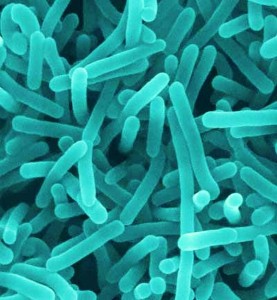If you think the microbial world ends with yeast, or e-coli, it’s time to meet the bacterodites and the fermicutes. These are huge families of microbes that are next to impossible to culture in a lab. Thanks to super-fast gene “typing” methods, today we know that these bacteria can live in huge quantities in our intestinal tracts — and they can have a big impact on our health. For instance, a recent study from the University of Milan finds that children in Europe who eat a typical western diet, have a high proportion of fermicutes in their gut, and they suffer from more allergies. Plus, plenty of these children are overweight.
Children in rural Africa who eat an unprocessed, plant-based diet have far fewer fermicutes, and fewer allergies. And far fewer are overweight.
So which comes first, too many firmicutes, or ways that people eat that promote microbes that push even further away from health? And what makes the difference in what people eat? Is it the number of calories? How much fiber? How much sugar? How much protein? What kinds of fat?
For a gut level view of what’s going on, let’s talk with CU Boulder scientist Rob Knight. Rob’s an expert on the emerging world of the micro-bi-ome. Some of the latest findings involve what happens if a human, or a lab animal, receives an inoculation of microbes. Sometimes just a teaspoon of healthy microbes from a healthy critter’s gut can save an animal from some deadly intestinal diseases. Sometimes microbes from an overweight animal can make other animals obese. And get this. Most people harbor very different families of microbes on their skin. But often twins — even if they live hundreds of miles apart as adults — have very similar microbes. Wild!
Listen – Short Version – 5 minutes
Listen – Extended Version – 25 minutes
Say! In the extended interview, we mention an unusual treatment for deadly c-diff colitis that involves a stool transplant. We’ll tell you more about that in our next post.







